Podcast E8 – December 28, 2021
This episode will share with you my tips on how I turn 1 plant into 30 through propagation.
You don’t need a huge text book or expert level education in order to propagate plants. It’s actually quite simple! Propagation is the only free way to multiply your plants, and as a bonus…it’s so easy!
Listen to the Podcast and Read Along!
2 Types of Propagation:
Type 1: Sexual Propagation
Seeds are the result of sexual propagation! Insects and wind pollinate plants and seeds results (if given enough time). You can actually hybridize plants intentionally to get a new plant from the 2 parents. This is a popular hobby among Rose growing enthusiasts, and I actually have hybridized roses and grown a new baby rose plant. Roses are
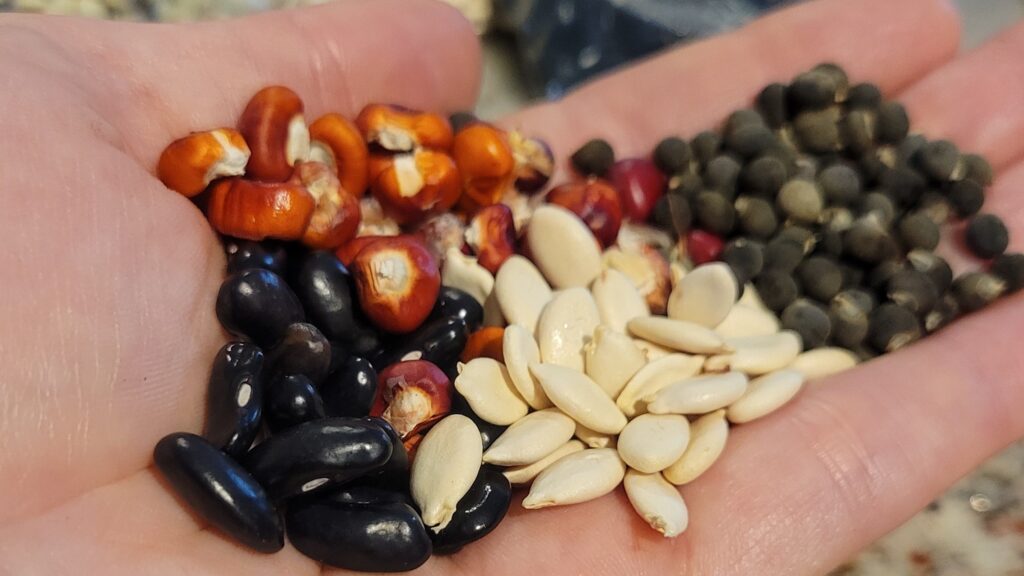
Type 2: Asexual Propagation:
This is the quick gratification propagation with various methods: layering, grafting, budding, division, and cuttings.
Layering:

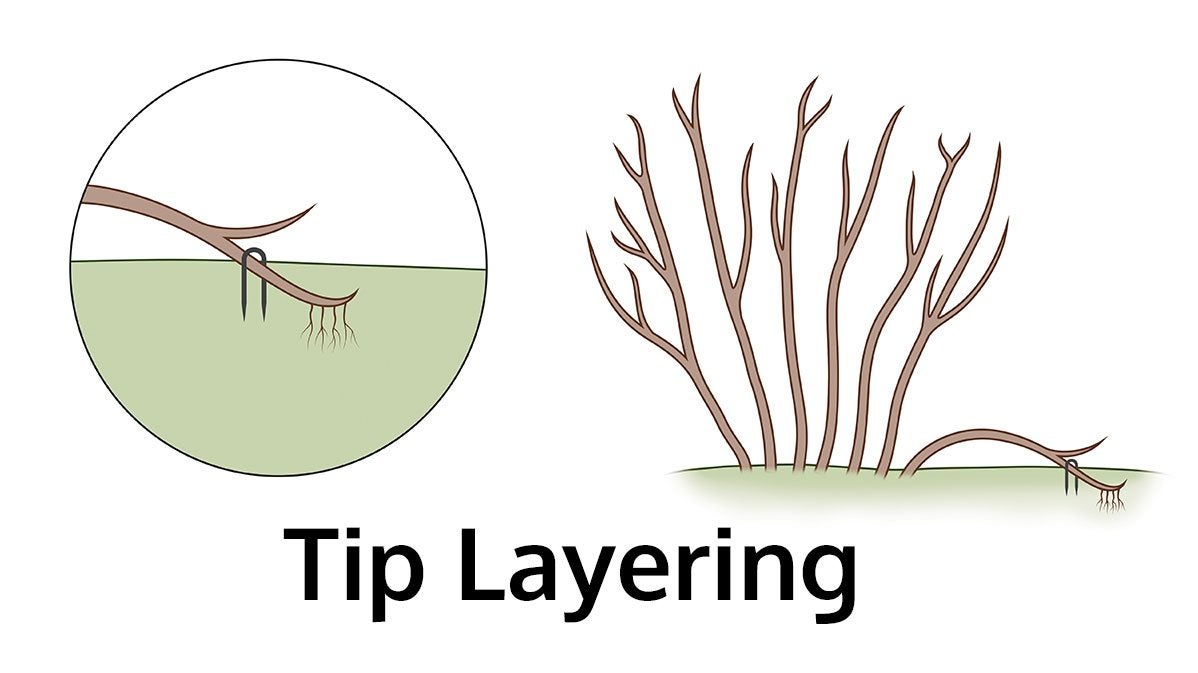
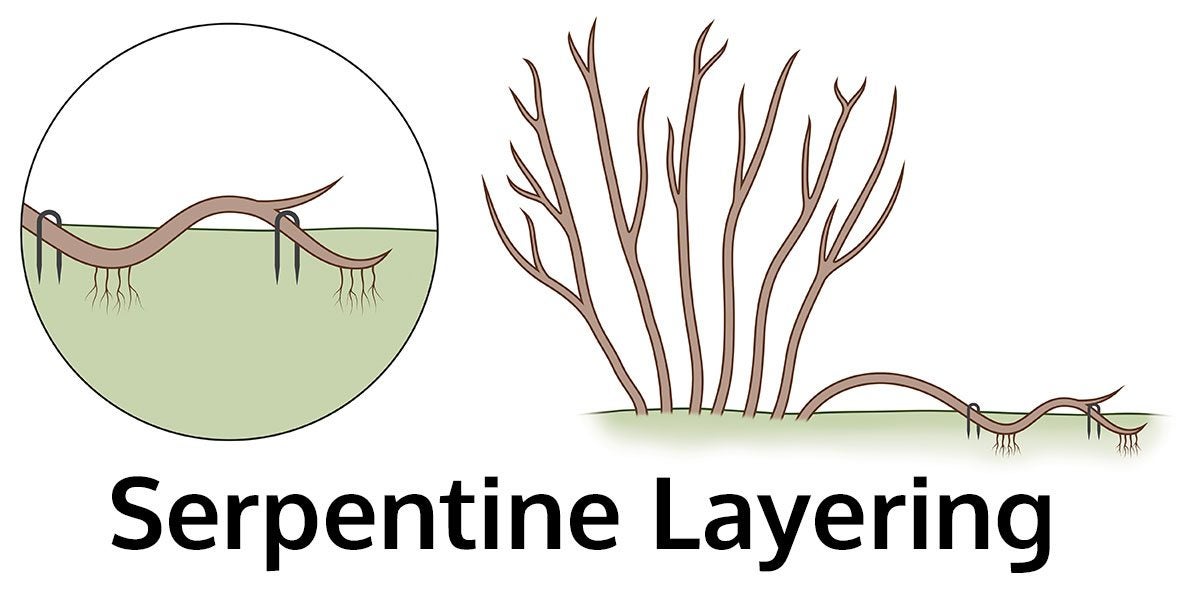
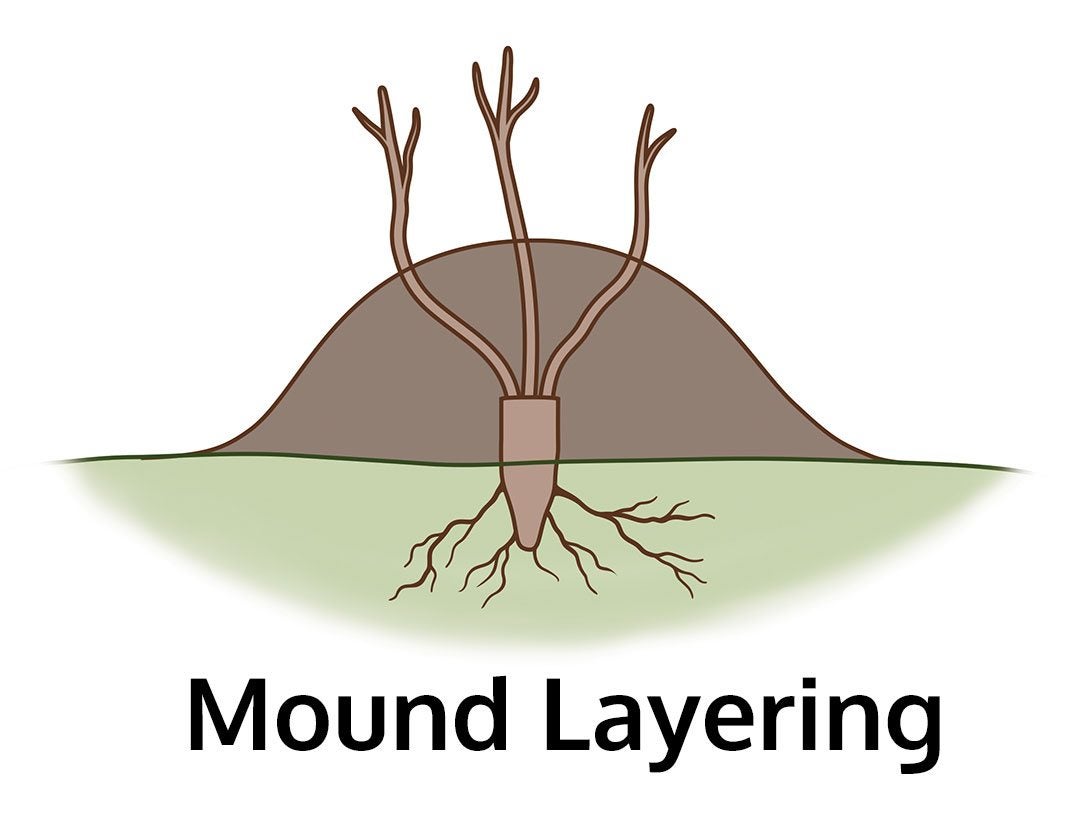
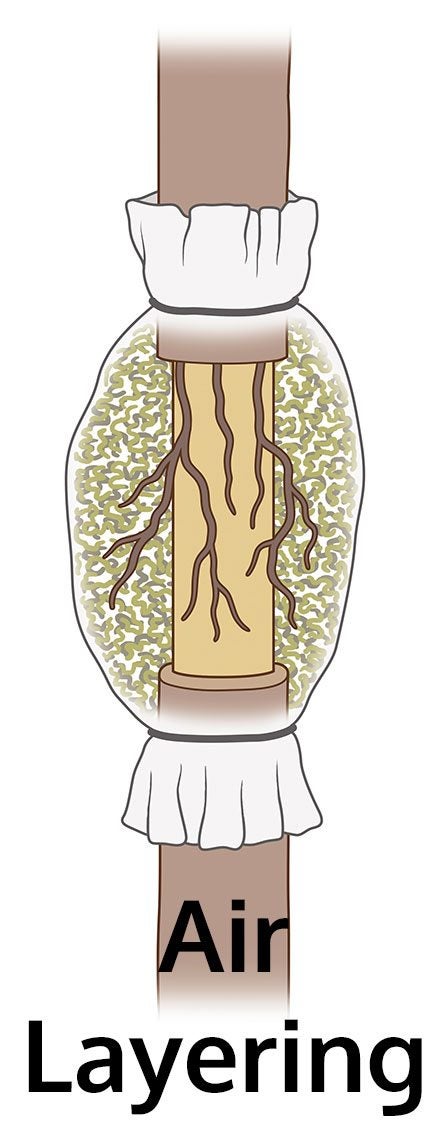
Graphics from Gardening Know How
For more detailed information on layering, listen to the podcast Episode 8, minute 2:00 for more details.
Grafting:
Grafting is not difficult to do. As long as you have both the host plant and the cutting, it’s fairly easy. Have your materials ready before jumping into this project. I do not find simple grafting, like the example below shows, to be an advanced technique. There are other types of grafting, such as chip grafting that may be considered slightly more advanced.
Here’s the catch. You actually massacre the host plant in order to start your grafting project and your cutting must be appropriately sized and compatible to get a good grafted result, so it is important that you enter into your grafting project fully prepared to complete it correctly.
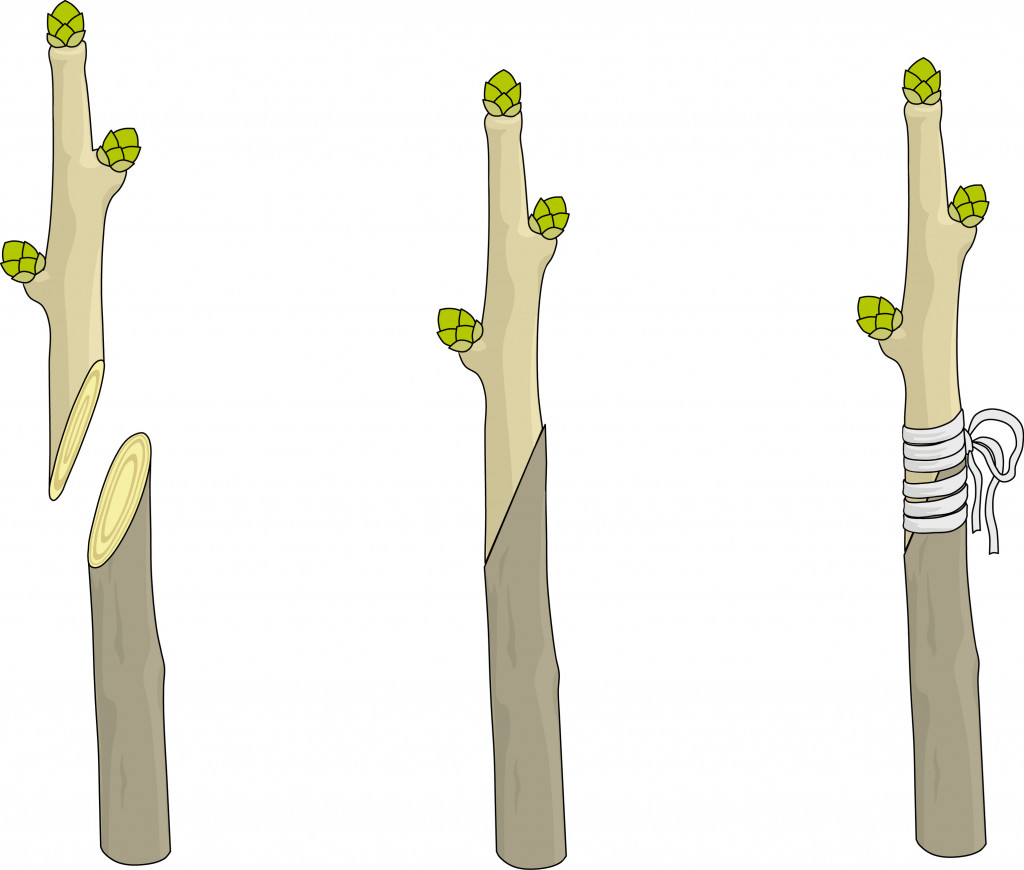
For more detailed information on grafting, listen to the podcast Episode 8, minute 3:30 for more details.
Budding:
Bud grafting is not difficult to do. As long as you have both the host plant and the bud to add, it’s fairly easy. Have your materials ready before jumping into this project. I will say, in the propagation world, bud grafting is an advanced technique that most classes require you to have the fundamentals of propagation and grafting before entering into.
Unlike grafting, budding will damage the host plant, but you still have a host alive and well if mistakes are made. Budding does not have to occur like the example below where the host does not exist after the “operation,” which is why I have this propagation method separated from grafting even though technically it is a grafting sub-heading.
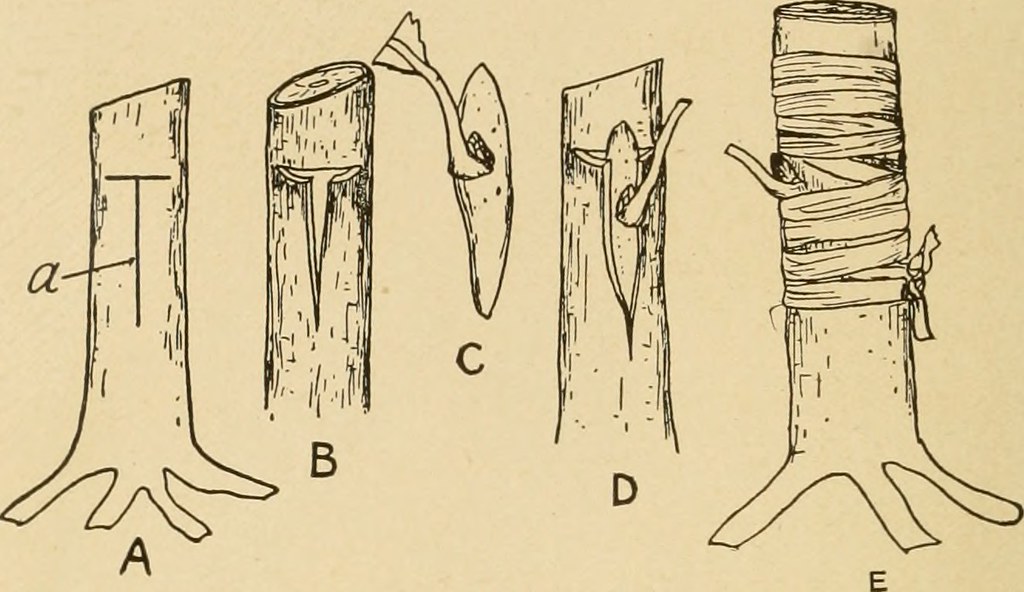
For more detailed information on budding, listen to the podcast Episode 8, minute 4:15 for more details.
Division:
Division propagation works with any plant that naturally multiplies underground. For example, bulbs, rhizomatous plants, plants with runners, and plants with tubers can be divided and turned into an additional plant. In fact, bulbs can be cut in half and then each half re-grown into 2 separate plants. The world of plant division is incredible! Plus, division is usually instantly gratifying because typically both full grown adult plants are available and just require a little human intervention to separate and re-plant.
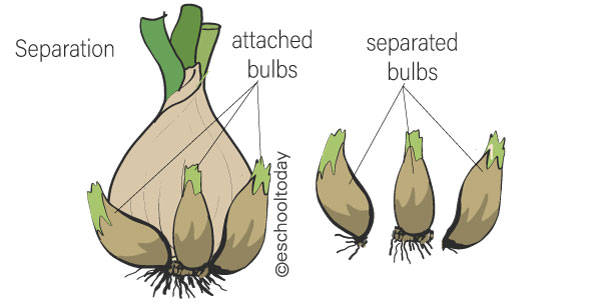
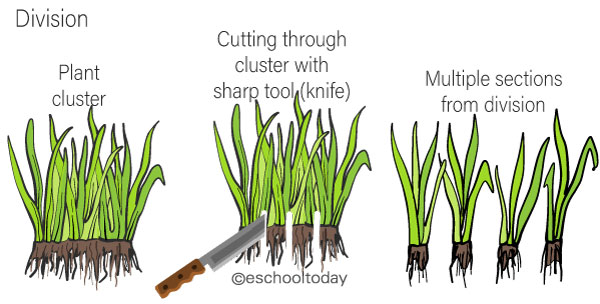
For more detailed information on division, listen to the podcast Episode 8, minute 4:45 for more details.
Cuttings:
If you are familiar with propagation, you have probably seen this done multiple times with cuttings.
Have a minimum of 2 nodes available in the soil and a minimum of 2 above the soil when you propagate a cutting. This means when you take a cutting from a parent, you need to plant for that activity. I like to take additional nodes from a parent as a fail safe just in case I make the wrong cut or make a mistake later on.
Taking cuttings from the tip of a parent plant is easier to root. Plus, a lot of plants like to be trimmed because this signals to the plant that it’s time to put on new growth and fruit. Plants that flower or fruit are best to take cuttings from, and they prefer to be trimmed. Cuttings are usually taken as hardwood cuttings, but you can also propagate softwood cuttings (or green cuttings) with the right plant.
Think of it this way. Most people trim their shrubs, hedges, ornamental trees, etc. A lot of these plants (if not all) can be propagated from the cuttings you make anyways when you do your regular maintenance.
As a rule, I always take a hardwood cutting during a dormant period (usually between first frost and last frost in your climate). For Houston, this means roughly mid-January is a good time to take a cutting or after at least 2 weeks of consistently cool temperatures. Hardwood cuttings from deciduous plants should have all their leaves already fallen. Hardwood cuttings from evergreen plants would obviously still have leaves. I personally never take cuttings from evergreens and have found it easier to use division for these plants when they spread along the root system, but you can still use cuttings to achieve the same goal.
For more detailed information on cuttings, listen to the podcast Episode 8, minute 7:30 for more details or check out the blog or YouTube video for step-by-step instructions.
Other Ways to Learn From Me:
I hope today’s episode opened your eyes to the world of propagation. I’d love to hear about your propagation projects and see your successes in your garden. You can find me on Instagram or the Homestead Gardening Facebook group if you’d like to connect and share your garden stories with me.
Also, don’t forget Q&A Fridays are your opportunity to ask questions or ask for more information on this episode! For seed collecting and saving tips, this week’s sister YouTube episode shares how I propagate herbs easily through cuttings.
Hiring a Designer:
If you’ve tried to start a garden but had limited success or have no idea how to start, ask the expert! HDG Landscape Design has over a decade experience advising clients on the when, where, what, why, and how of ornamental garden design, growing edible plants, and outdoor living and pool design. Visit our website for a list of services.